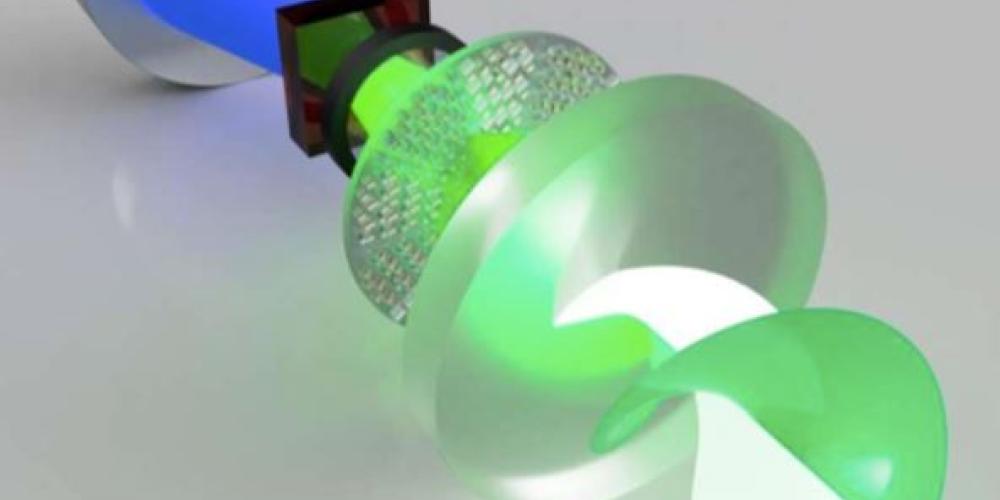
Laser functions as an optical screwdriver for micro and nano equipment
An international team of researchers including Vrije Universiteit Brussel, University of Witwatersrand (South Africa), Harvard University (USA), the National University of Singapore (Singapore), and CNST (Italy) has developed the world’s first meta-surface laser that produces superchiral light. Superchiral light has an ultra-high angular momentum and a rotation of the light around its own axis. The new laser can be used as a kind of optical screwdriver with applications in fields including food, imaging, computing and biomedicine.
The results of the research were published in the journal Nature Photonics. “With this laser we combine the latest techniques of nanofabrication, optical measurements and data analysis and offer a whole new perspective on the interaction between light and matter. Light can be used to move things at the nano-level,” says Professor Vincent Ginis, a VUB researcher affiliated with the Data Lab and the Applied Physics Research Group who was involved in developing the laser.
Meta-surface laser
A meta-surface is a super-thin surface to which small blocks have been applied via nanofabrication (see central disc in the image). The properties of these small blocks determine what happens to the light. The new laser uses a meta-surface made up of carefully crafted nanostructures, which are 1,000 times narrower than the width of a human hair.
The light passes through this meta-surface many times and is twisted each time. Due to the repeated interaction between the light and the surface, the laser can produce light with an ultra-high angular momentum, which causes the light to rotate significantly. The “twisted light” – also called chiral light – that this creates has an unprecedented level of purity. Due to both fundamental and technical limitations, it has not been possible until now to produce this chiral light state using a laser. With the new laser this is now possible, with full control over the orbital angular momentum and the spin or polarisation of the light.
“Using this light, we can manipulate microstructures in a totally new way. Light can be used for control: to move and sort things. Twisted light can drive micro-equipment to generate a current, and to mimic centrifuges, where classical physical and mechanical systems can no longer be used because they are too large. A variety of industries and research areas need superchiral light to improve their processes, including the food, computer and biomedical industries,” said Ginis.
Chiral light
The principle of chirality is derived from our hands (Greek: cheir), which are each other’s mirror image. Some molecules are identical in composition, but they are each other’s mirror image and therefore have different properties. DNA, for example, is a molecule that rotates in a specific direction. Light can be chiral in two ways: rotation around its own axis (spin AM) or an orbital angular momentum (OAM), similar to the earth orbiting around the sun. Light with a large angular momentum moves in one direction, but at the same time rotates around its axis of propagation.
The research team was made up of scientists from VUB, the University of Witwatersrand in South Africa, Harvard University in the US, the National University of Singapore and the Center for Nanoscience and Technology in Italy.